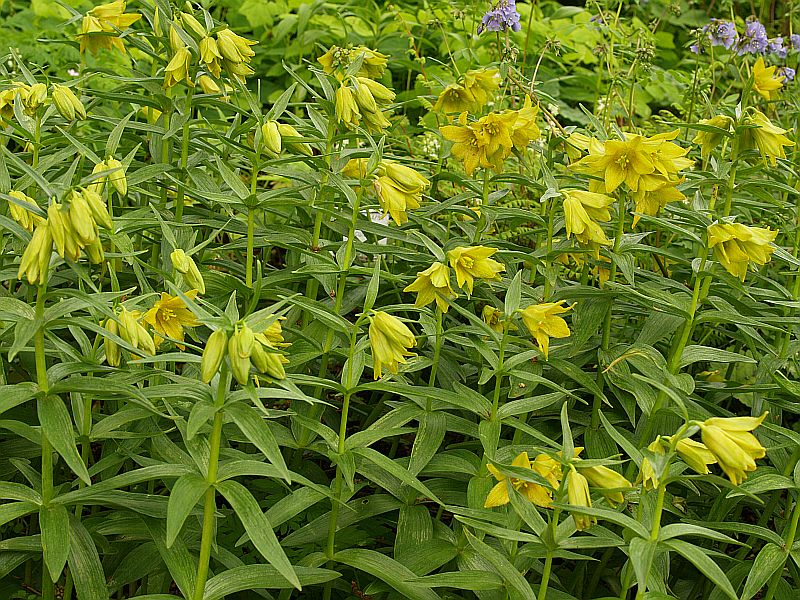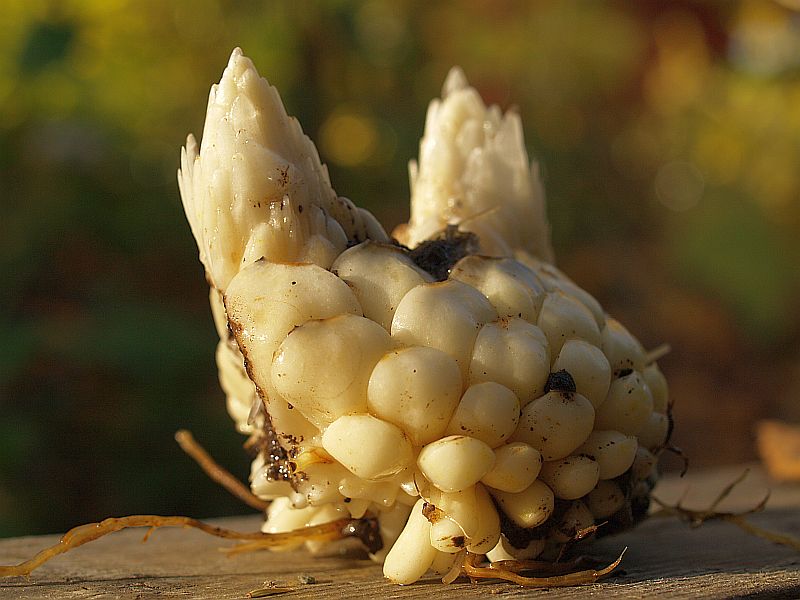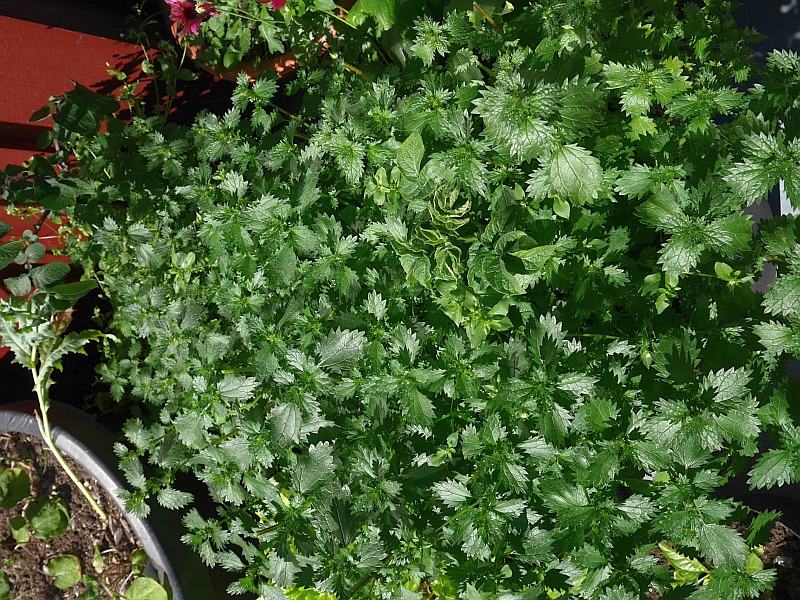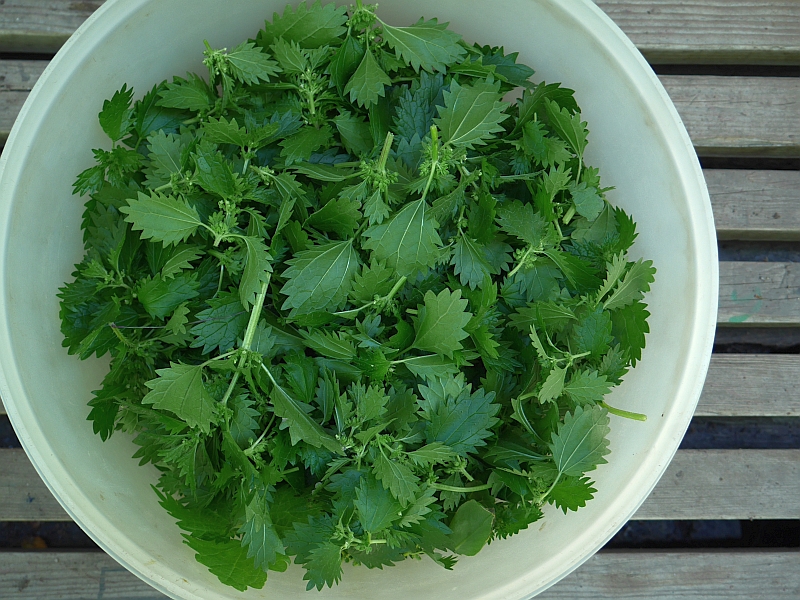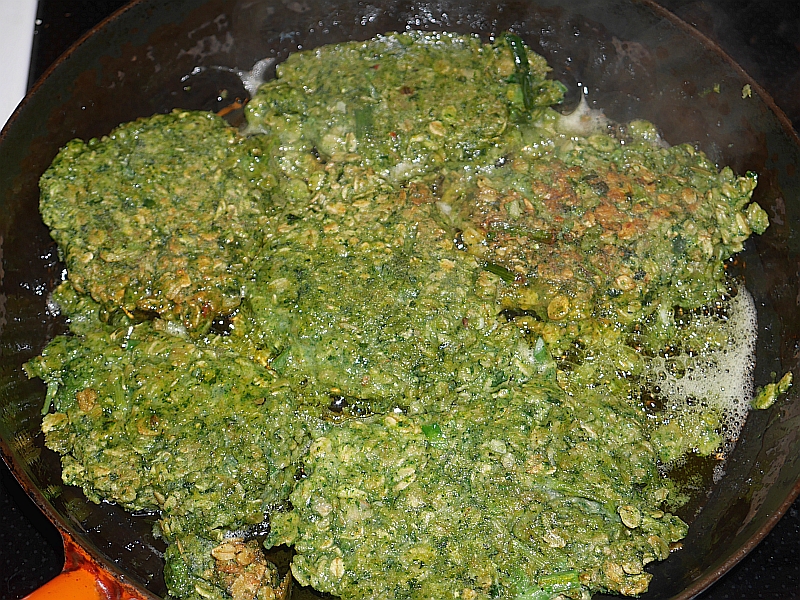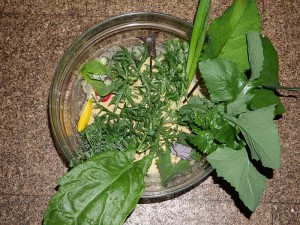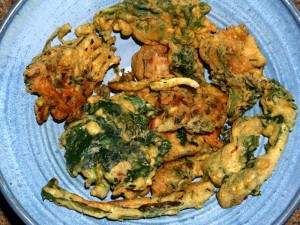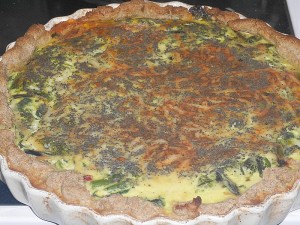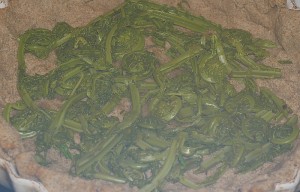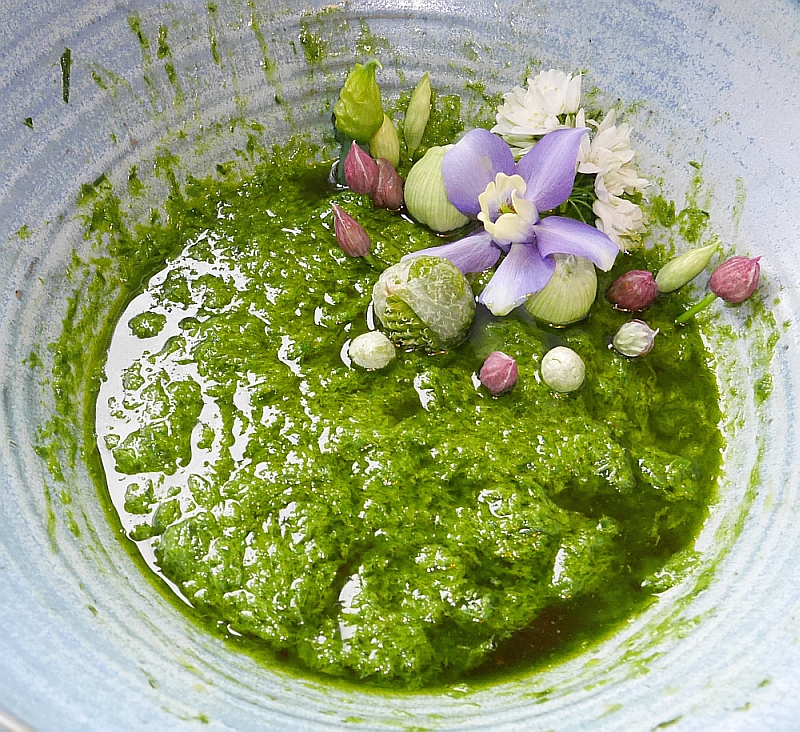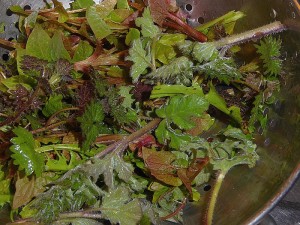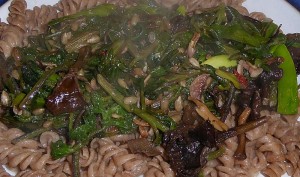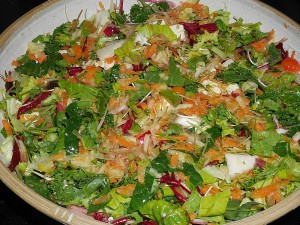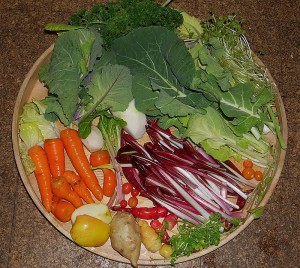Nettle burgers for dinner: Working in the garden all day…didn’t want to spend much time in the kitchen…needed some fast slow food. My helper Daina Binde had left an organic egg mix in the fridge when she left – not totally sure what was in it….on the balcony was a special potato growing in a large pot which had become “infested” with annual nettle (Urtica urens) (well, not really infested as I’d sown the seed :) )
I cooked the nettles quick, mixed with the egg mix, chili, siberian nodding onion, rolled oats and buckwheat flour and fried in sunflower oil….urtigers I reckon we can call them ;)
Category Archives: Food
Pakora hasn’t met this selection of veggies before!
I gave myself a little treat this week and made Indian pakora! Pakora are basically fried vegetable fritters, often sold as a starter in Indian restaurants. The vegetables were dipped in a batter made of gram (chick pea) flour, a little chili and garam masala spice. It would be interesting to use broad bean (fava) flour instead of chick peas!
I used: Day lily buds (Hemerocallis), common sow thistle (Sonchus oleraceus), radish, red mitsuba (Cryptotaenia japonica atropurpurea), musk mallow (Malva moschata), Korean aster (Aster scaber), sorrel (Rumex acetosa), garden orach (Atriplex hortensis), Parsley pea (tops), Allium nutans x senescens (leaves and flower stems/buds) and Hablitzia tamnoides (tops)…..
DELICIOUS!!
Ostrich Fern pie
A 230 onion pesto :)
Garden forage 9th April 2015
Electronic release of Around the World in 80 plants
The PDF version is now available through Green Shopping and you can download a free sample!! ATW from Green Shopping
The Kindle and iTunes versions are also on the way (coming real soon!). It will also be added to the Kobo list (WHSmith and Barnes & Noble).
Shoreditch Radio Interview on Around the World!
An Interview with the Extreme Salad Man Stephen Barstow at www.Shoreditchradio.co.uk on Sunday 18 January at 20:00 UTC
This is an interview I did in London with London Permaculture’s Stefan Geyer when I was in the UK on 12th December!
If you miss the broadcast, you can listen at your leisure by going to www.21stCenturyPermaculture.com
From the vaults: my Edible and Useful Plant Seed Trade List from 2000!
14 years ago and my seed list had some 1,000 entries and I even added a usage code (from Plants for a Future)………
Edible and Useful Plant Seed Trade List
for November 2000 to October 2001
About the Garden: Most of the seed offered is collected in my own garden here on the edge of the Trondheimsfjord at close to
64 deg. N an area of extreme climatic variability. The grass can be green on 1st January and snow might lie for a short while on
1st June. We talk about having two seasons – the green and the white winter. It is, however, surprisingly mild for the latitude. A
remarkable number of species survive the winter (or should I say summer) and seem to thrive. However, a number of the plants
are grown in pots and are moved in to a cold cellar (temperature just above zero in mid-winter) in the winter without extra
warmth.
The garden is one of a network of organically run gardens in Norway and can be visited by agreement. We are just at the end of
our 17th season here. We use no input apart from compost, an important ingredient of which is seaweed which we collect every
spring.. We grow a wide range of vegetables many of which are not commonly grown here (e.g., Runner Beans, Broad Beans, Continue reading From the vaults: my Edible and Useful Plant Seed Trade List from 2000!
Salad from the tunnel; 12th January 2015
Still a week before the sun returns here in Malvik and we leave the tunnel…today’s 20 variety salad harvested today from the living room and cellar!
Carrots, chicories, beetroot, tomato, apples, False watercress (Apium nodiflorum), Physalis, sweet potato shoots, wild buckwheat shoots, various kales, ocas, turnip, parsley….
Riceroot and Hog Peanuts
I like the comment by Eve Emshwiller in the interesting article http://whyfiles.org/2012/farming-native-american-style looking at how to learn from how the Native Americans had developed stable, sophisticated food-gathering systems:
“There were a lot of people who were not considered agriculturalists, who were [supposedly] just gathering from the wild. But if you really understand what they were doing, there is not a sharp line between gathering and farming. There is a huge continuum of ways that people manage resources and get more from them.” This is a message that I try to get across in my book where many examples are given of this continuum between foraging and gardening.
I grow a couple of the wild gathered tubers mentioned in the article. First, Riceroot is a really hardy edimental and an important foraged food plant across its range (the first group of pictures below). The last three pictures are of Hog peanut (Amphicarpaea bracteata).
